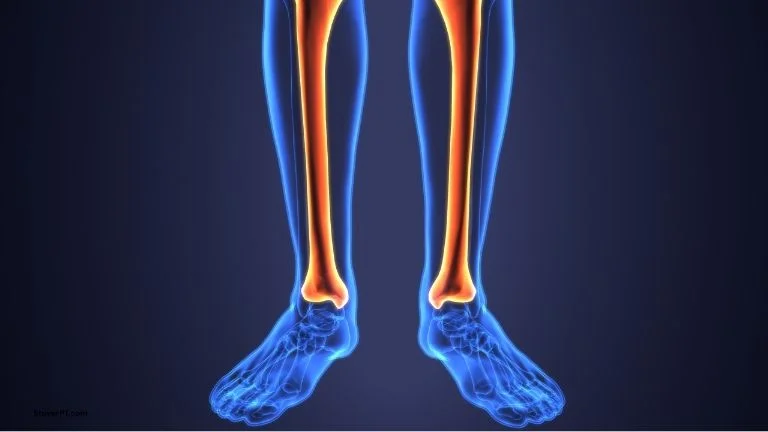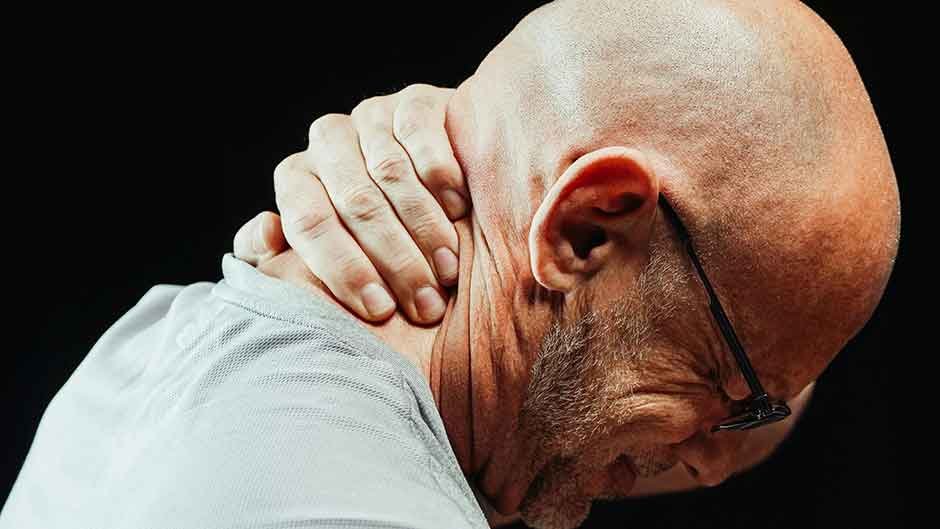Bumpy Shin Bone No Pain: Causes & When to Worry

Bumpy shin bones without pain are typically caused by normal anatomical variations, previous injuries, or conditions like Osgood-Schlatter disease. Most cases are harmless and don’t require medical attention unless accompanied by other symptoms.
Understanding Bumpy Shin Bones
The human shin consists of the tibia (shinbone), which is the larger bone at the front of your lower leg. Many people notice bumps or irregularities along their shin bones and wonder if these are normal or signs of a medical condition. The good news is that in most cases, bumpy shin bones without pain are completely normal variations in anatomy or the result of previous minor injuries that have healed.
Normal Anatomy of the Shin
The tibia is not naturally perfectly smooth. The front edge of the tibia (called the anterior crest) can be felt just beneath the skin, as there is minimal fat or muscle covering this area. What many people feel when they run their fingers along their shin are not actually irregularities in the bone itself, but rather the surrounding soft tissues.
The shin bone is covered by a layer of connective tissue called the periosteum. This tissue serves to protect the bone and connect ligaments and tendons to it. The periosteum can have varying thickness along different parts of the shin, which might give the impression of bumps when touched.
At the top of the shin, there is a natural prominence called the tibial tuberosity. This is where the patellar tendon (which connects to the kneecap) attaches to the tibia. This bump is normal and can be more prominent in some individuals than others.
Common Causes of Bumpy Shin Bones Without Pain
Previous Injuries
One of the most common reasons for bumps along the shin bone is previous minor injuries. When you knock your shin against a hard object, the periosteum can become damaged and inflamed. As it heals, it may form thicker areas or adhesions, creating permanent small bumps along the shin.
These bumps are usually painless once fully healed and represent normal scar tissue formation. Many adults have several of these bumps along their shins from various impacts throughout their lives, especially those who played sports involving shin guards or frequent leg impacts.
Osgood-Schlatter Disease
Osgood-Schlatter disease is a common cause of a prominent bump just below the knee. This condition typically affects adolescents during growth spurts, especially those who are physically active. It occurs when the patellar tendon pulls on the tibial tuberosity, causing inflammation and sometimes extra bone growth.
The condition manifests as a bump below the kneecap that may be painful during the active phase of the condition but often becomes painless once growth is complete. The bump, however, may remain permanently even after symptoms resolve.
Osgood-Schlatter disease is more common in boys than girls and typically affects adolescents between the ages of 10 and 15. The condition usually resolves on its own once the growth plate closes, though the bump may remain as a permanent feature.
Bone Growth and Development
During periods of rapid growth, particularly during adolescence, bones grow at a faster rate than muscles and tendons. This can cause temporary stress on the attachment points where tendons connect to bones, resulting in bumps that may or may not be painful.
These growth-related bumps often resolve once growth is complete, but some may persist into adulthood. They represent normal variations in development and are not cause for concern if they don’t cause pain or limit function.
Bone Spurs
Bone spurs (osteophytes) are bony projections that form along bone edges. They can develop on the shin bone due to aging, wear and tear, or conditions like arthritis. These spurs form as the body attempts to repair damage by creating extra bone.
While bone spurs can sometimes cause pain if they press on nerves or other tissues, many are completely painless and discovered only incidentally. Painless bone spurs generally don’t require treatment.
When to Be Concerned About Bumpy Shin Bones
While most bumps on the shin bone without pain are harmless, there are certain situations when medical evaluation is warranted.
Signs That Warrant Medical Attention
If your bumpy shin bones are accompanied by any of the following symptoms, you should consult a healthcare provider:
- Pain, especially pain that worsens over time
- Redness or warmth around the bump
- Swelling that increases in size
- Bumps that appear suddenly without any known injury
- Fever or feeling generally unwell
- Limited mobility in the leg or knee
- Bumps that are growing or changing in appearance
Conditions That Can Cause Painful Shin Bumps
Shin Splints
Shin splints (medial tibial stress syndrome) cause pain along the inner border of the shinbone. This condition results from inflammation of the muscles, tendons, and bone tissue around the tibia, typically due to overuse or inadequate recovery from exercise.
Unlike harmless bumps, shin splints cause pain that is usually worse in the morning and after exercise. The pain typically improves during warm-up. Shin splints are common in runners and athletes who participate in activities with frequent stopping and starting.
Stress Fractures
Stress fractures are tiny cracks in the bone that can occur when muscles become fatigued and can’t absorb additional shock. The muscle then transfers the stress to the bone, causing small cracks.
Stress fractures in the shin bone cause pain that worsens with activity and improves with rest. They can result from a sudden increase in physical activity, improper footwear, or running long distances regularly.
Erythema Nodosum
Erythema nodosum is a condition that causes red to purple, painful bumps to form on the skin, most commonly on the front of the shins. These bumps result from inflammation of the fat within the skin and can be a reaction to an infection, underlying condition, or medication.
Unlike normal shin bumps, erythema nodosum bumps are tender, painful, and warm to the touch. They may also be accompanied by fever, joint pain, and fatigue.
Diagnosing Bumpy Shin Bones
If you’re concerned about bumps on your shin bones, a healthcare provider can help determine their cause through various diagnostic methods.
Physical Examination
A healthcare provider will first perform a physical examination, looking at and feeling the bumps to assess their characteristics. They will also ask about your medical history, including any previous injuries, activities, or conditions that might be relevant.
Imaging Tests
If necessary, imaging tests may be ordered to get a better look at the bone and surrounding tissues:
- X-rays can show the structure of the bone and detect fractures or abnormal bone growth
- MRI scans provide detailed images of both bone and soft tissues
- Ultrasound can help visualize soft tissue structures around the bone
Laboratory Tests
In some cases, blood tests may be ordered to check for signs of infection or inflammation, especially if conditions like erythema nodosum are suspected.
Treatment Options for Bumpy Shin Bones
Treatment for bumpy shin bones depends on the underlying cause and whether they’re causing symptoms.
When No Treatment Is Needed
If the bumps are painless and represent normal anatomical variations or healed injuries, no treatment is typically necessary. These bumps are harmless and don’t affect function.
Treatment for Osgood-Schlatter Disease
For active Osgood-Schlatter disease causing pain, treatment options include:
- Rest and activity modification
- Ice to reduce inflammation
- Stretching exercises for the quadriceps and hamstrings
- Over-the-counter pain relievers
- A patellar tendon strap to reduce pressure on the tibial tuberosity
The bump from Osgood-Schlatter disease may remain even after treatment, but it typically becomes painless once growth is complete.
Treatment for Shin Splints

If bumpy shin bones are related to shin splints, treatment may include:
- Rest from high-impact activities
- Ice therapy
- Proper footwear with good arch support
- Gradual return to activity
- Stretching and strengthening exercises for the lower leg
Treatment for Erythema Nodosum
For erythema nodosum, treatment focuses on addressing the underlying cause and managing symptoms:
- Treating any identified infection
- Adjusting medications if they’re the cause
- Anti-inflammatory medications to reduce pain and swelling
- Elevating the affected area to minimize swelling
- Rest
Prevention of Shin Bone Issues
While some bumps on the shin bone are unavoidable due to genetics or normal development, there are steps you can take to prevent injury-related bumps and conditions.
Proper Footwear
Wearing appropriate, supportive footwear during physical activities can help prevent stress on the shin bones. Shoes should provide adequate cushioning and support for your specific foot type and activity.
Gradual Increase in Activity
Sudden increases in physical activity can stress the shin bones and surrounding tissues. Gradually increasing the intensity and duration of exercise allows your body to adapt and reduces the risk of injury.
Protective Gear
Using shin guards during activities with a high risk of leg impacts, such as soccer or hockey, can prevent direct trauma to the shin bones.
Proper Nutrition
Adequate calcium and vitamin D intake supports bone health and may help prevent certain bone-related issues. A balanced diet rich in these nutrients is important, especially during periods of growth.

Frequently Asked Questions About Bumpy Shin Bones
Are bumpy shin bones normal?
Yes, many people have bumps along their shin bones that represent normal anatomical variations or healed minor injuries. These bumps are typically harmless if they don’t cause pain or other symptoms.
Can shin bumps go away on their own?
Some shin bumps, particularly those related to growth or recent minor injuries, may resolve on their own over time. However, bumps from healed injuries or conditions like Osgood-Schlatter disease often remain permanently, though they typically become painless.
Should I be worried about a bump on my shin that doesn’t hurt?
In most cases, a painless bump on the shin is not cause for concern. However, if the bump is growing, changing in appearance, or develops other symptoms like redness or warmth, it’s best to have it evaluated by a healthcare provider.
How can I tell if a shin bump is serious?
Signs that a shin bump might be serious include pain, redness, warmth, increasing size, sudden appearance without injury, fever, or limited mobility. If you experience any of these symptoms, consult a healthcare provider.
Can exercise cause bumpy shin bones?
Certain exercises, particularly high-impact activities like running, can contribute to conditions such as shin splints or stress fractures that may cause temporary bumps or irregularities along the shin. Proper training techniques, appropriate footwear, and adequate rest can help prevent these issues.





